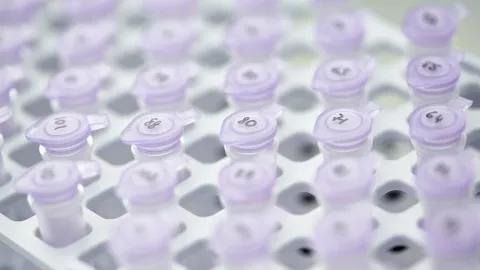
Amiselimod
Amiselimod (formerly known as MT-1303) is a tablet developed for relapsing MS by Mitsubishi Tanabe (MT) Pharma Corporation.
- Current phase of trial:
- Phase 2
- Type of MS:
- Relapsing MS
Find out more about amiselimod
How does amiselimod work?
Amiselimod works in a similar way to the licensed treatment fingolimod. It binds to receptors on immune cells and alters their behaviour. This is thought to reduce the number of immune cells that attack the brain and spinal cord, reducing the damage to myelin.
How is amiselimod taken?
Amiselimod is a tablet taken daily.
Latest research
Phase 2 trial
A phase 2 clinical trial involving 400 people with relapsing MS finished in 2015. The trial ran for 24 weeks and evaluated three different doses of amiselimod compared to a placebo drug. To assess the safety and tolerability of amiselimod, researchers looked at MRI scans and rates of relapses to measure the effects of the drug against relapsing MS.
An extension of a phase 2 study followed some participants for a further further 18 months to evaluate the long-term safety and tolerability of amiselimod.
Data collected from these trials was analysed and published in a peer-review journal in 2016. Researchers concluded that amiselimod significantly reduced the total number of lesions in the participants. Amiselimod was also found to be safe and well-tolerated.
What are the side effects of amiselimod?
Commonly reported side effects from the phase 2 study were headaches and common cold.
How does amiselimod compare with current treatments?
In 2021, researchers compared data on the efficacy of amiselimod to other drugs of the same type, including fingolimod, laquinimod, siponimod, ozanimod, and ponesimod. After analysing clinical trial data involving these six drugs, the researchers concluded that amiselimod had the highest efficacy.
However, the researchers noted there were a number of flaws in the data. More clinical trials directly comparing the drugs would be needed to confirm these findings.
When is amiselimod likely to become available?
For amiselimod to be available, it would need to be shown to be safe and effective in phase 3 trials, and go through the licensing process. This is like to take several years.

